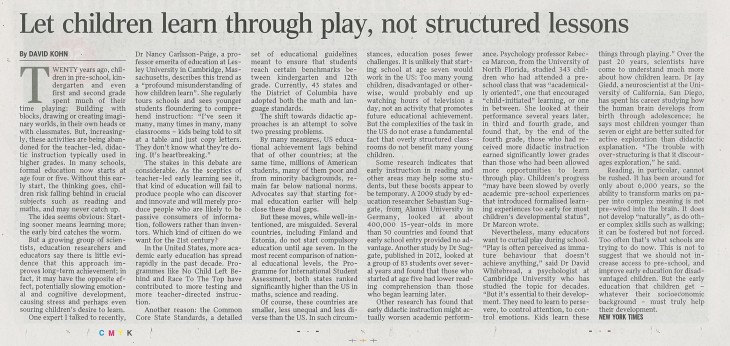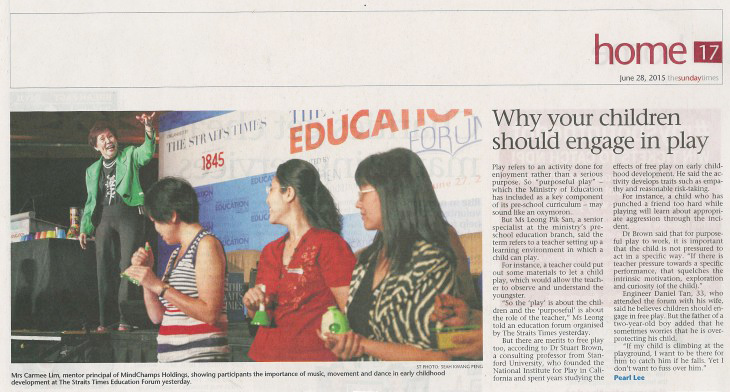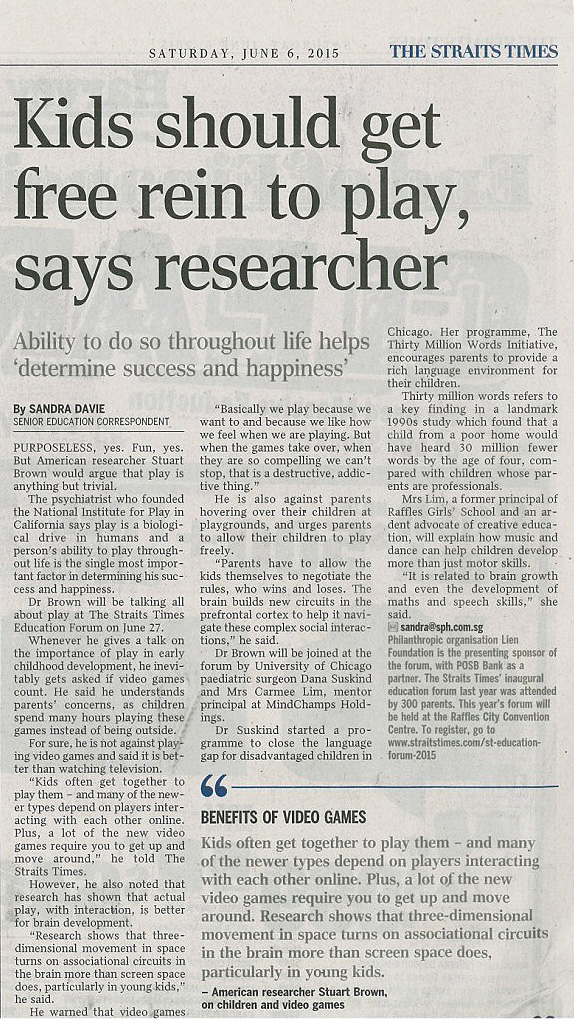Achieving balance between PLAY & didactic teaching

All departments follow the MOE syllabus and curriculum and lessons are taught accordingly as such. Besides using the PLAY approach to learning, students are also required to spend time attempting the exercises found in MOE prescribed textbooks/workbooks. In addition, additional worksheets are given to students to reinforce their learning. At an appropriate juncture in the students’ learning, individual desk work is also being conducted weekly for students to familiarize themselves with the pen and paper type of assessments. In short, there is a good balance between integrating PLAY in learning and conducting didactic teaching where necessary.
There’ll be more PLAY at the lower primary levels as it’s very important to get children to love learning from young. If learning lacks PLAY from young, the child might come to dislike learning when older. It’s important for children to discover the joy of learning.
At the upper primary levels, the integration of PLAY into the curriculum will be reduced proportionately but not totally as current research has shown that children , and even adults, need some PLAY whilst learning. Do visit our website gallery to read up on the research findings published in the Straits Times last year. We’ve also done research to further verify that PLAY does indeed help children learn better.
At the P5 & P6 levels, we’ll also start to prepare the children for the PSLE through conventional teaching, interspersed with the occasional PLAY, to still make learning for PSLE meaningful and a joy.

David Kohn explained that a growing group of education researchers and educators say that schools need to cater to how children learn best in the early years of schooling. This is likely to have an impact on how schools nurture students who can “discover and innovate”. Other research has found that students who were encouraged to initiate their own learning through play earned significantly better grades in their middle primary years. Dr David Whitebread, a psychologist at Cambridge University explained that play is “essential to (student) development. They need to learn to persevere, to control attention and to control emotions. Kids learn these things through play.” At West Spring Primary School, the school also believes in extending the use of play in the school’s teaching approach. The school adopts the PLAY approach to allow students to actively explore and make meanings on their own while being supported by their teachers. The PLAY approach stands for Purposeful Learning Activities for the Young. Teachers design lessons that require active exploration by the students to be engaged in their own learning. The PLAY approach is more than just child’s play. The PLAY approach also helps students make the transition from kindergarten to primary school.
“Why your children should engage in play” – The Sunday Times, 28 June 2015

“Kids should get free rein to play, says researcher” – The Straits Times, 6 June 2015


